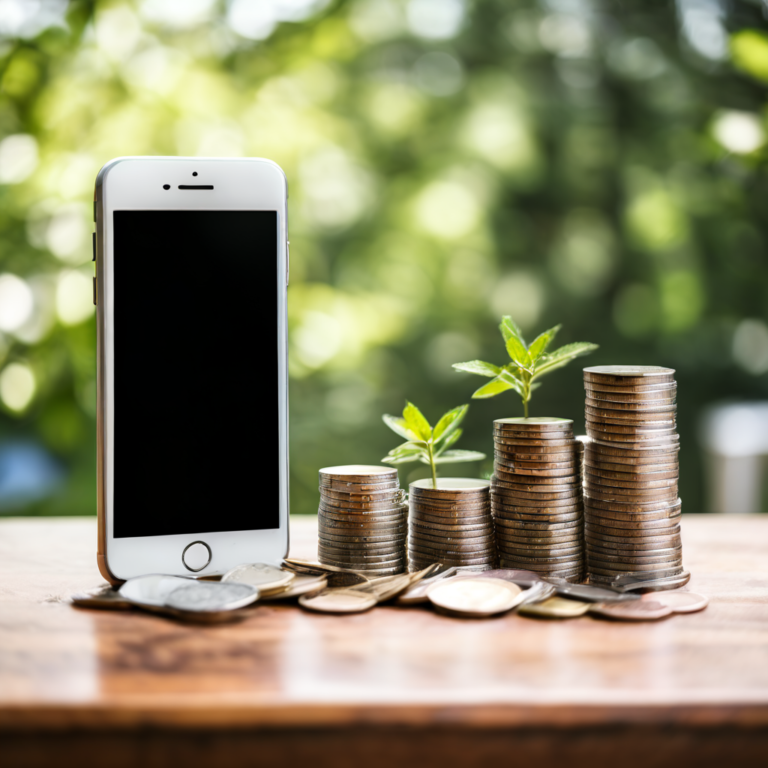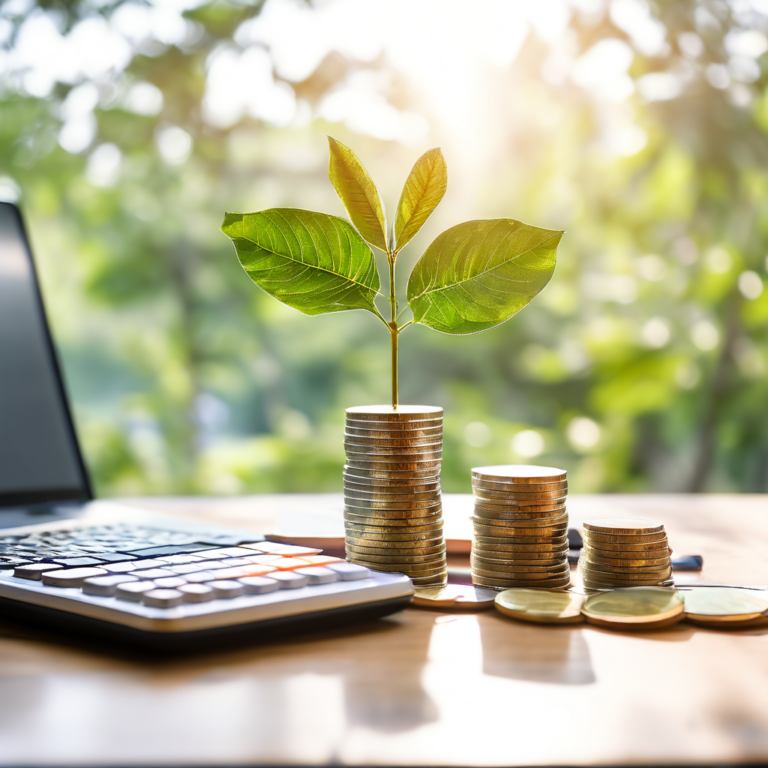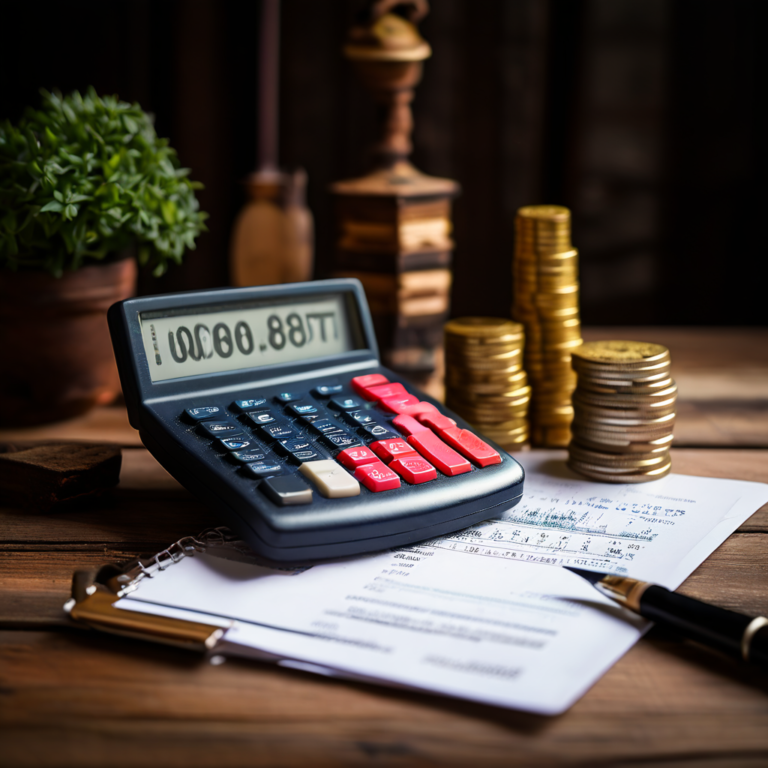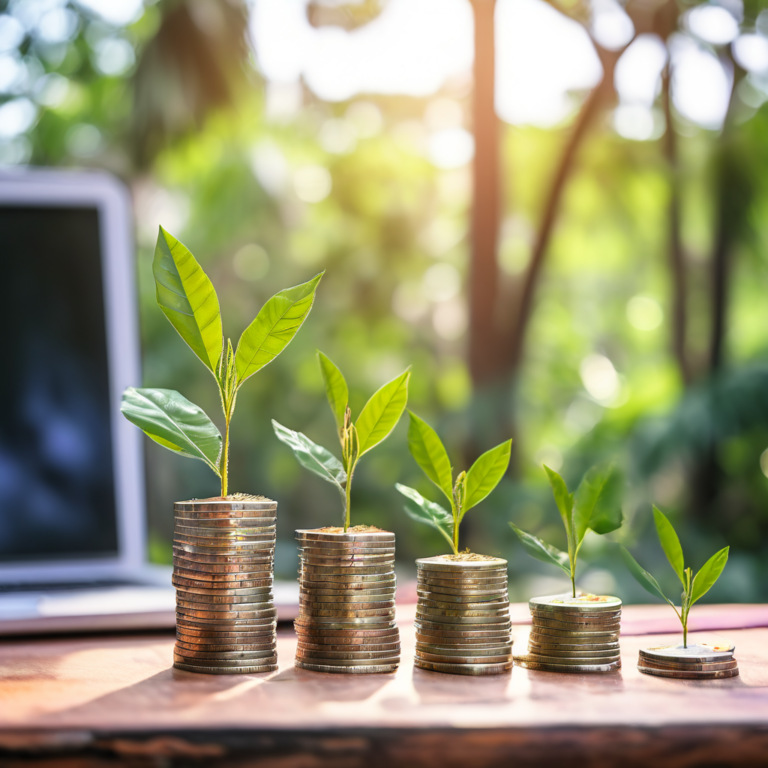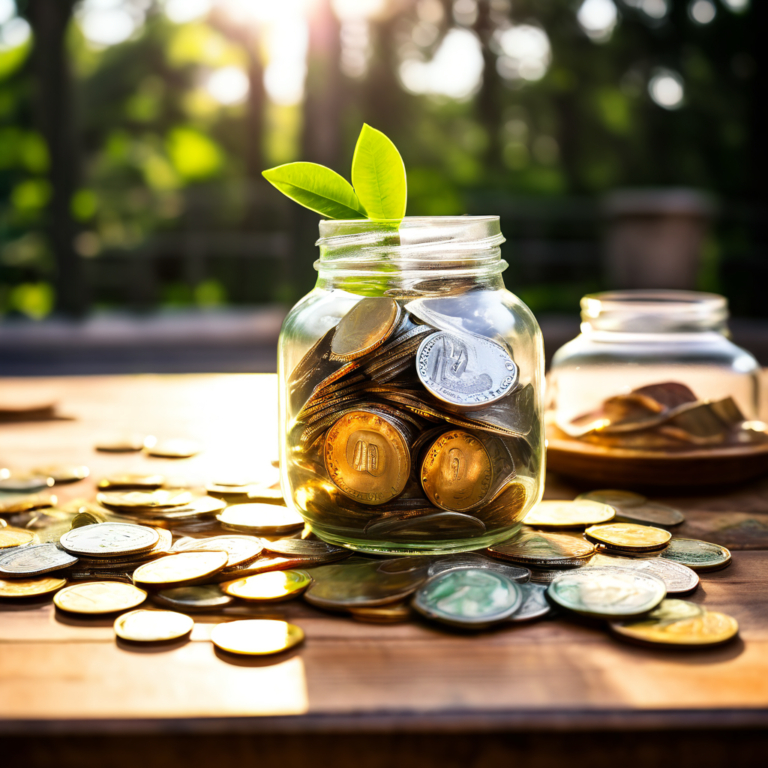he Ultimate Guide to Building an Emergency Fund
Introduction
Life is unpredictable, and unexpected expenses can throw your finances off track. Whether it’s a medical emergency, job loss, or urgent home repair, having an emergency fund can protect you from financial hardship. This guide will help you understand why you need an emergency fund, how much to save, and the best strategies to build and maintain it for long-term security.
Why an Emergency Fund Is Important
Acts as a Financial Safety Net for Unexpected Expenses
An emergency fund serves as a financial cushion to cover unexpected expenses, such as medical bills, car repairs, home maintenance, or sudden job loss. Life is unpredictable, and these unexpected costs can strain your finances if you’re not prepared. Without an emergency fund, you may be forced to dip into savings meant for other goals or take on debt, which can negatively impact your long-term financial stability.
Key benefits of having an emergency fund:
- Covers surprise expenses without disrupting your budget.
- Protects long-term savings by preventing withdrawals from retirement accounts or investment funds.
- Prepares you for life’s uncertainties, reducing the financial impact of unforeseen events.
Financial experts recommend saving at least 3 to 6 months’ worth of living expenses in an emergency fund. However, if your job is unstable or you have dependents, you may want to build a larger safety net to ensure greater security.
Prevents Reliance on Credit Cards or Loans in Emergencies
Without an emergency fund, people often turn to credit cards, personal loans, or payday lenders to cover unexpected expenses. This can lead to high-interest debt that becomes difficult to repay, further complicating financial stability.
How an emergency fund helps avoid debt:
- Eliminates the need for borrowing, preventing high-interest charges.
- Keeps credit utilization low, which positively impacts your credit score.
- Provides peace of mind, knowing you can handle emergencies without financial strain.
Having cash reserves allows you to stay in control of your finances and avoid the stress of accumulating debt during challenging times. Even starting with a small amount—such as $500 or $1,000—can make a significant difference.
Reduces Financial Stress and Promotes Financial Independence
One of the biggest advantages of an emergency fund is the sense of security it provides. When you know you have a financial buffer, you can handle unexpected expenses without panic or anxiety.
The psychological benefits of an emergency fund:
- Reduces financial stress, allowing you to focus on other priorities.
- Encourages smart financial decisions, since you’re not making choices based on desperation.
- Increases financial independence, giving you control over your money instead of relying on outside help.
Building an emergency fund doesn’t happen overnight, but consistently setting aside small amounts can make a huge difference over time. Consider automating your savings by setting up recurring transfers to a high-yield savings account, where your money remains easily accessible while earning interest.
By prioritizing an emergency fund, you’re taking a crucial step toward financial security, independence, and peace of mind—ensuring that life’s unexpected surprises don’t derail your financial future.
How Much Should You Save?
General Rule: Save 3–6 Months’ Worth of Living Expenses
A well-funded emergency fund acts as a financial safety net, but the amount you need to save depends on your individual circumstances. The general recommendation is to set aside 3 to 6 months’ worth of essential living expenses. This ensures that you can cover basic necessities—such as rent or mortgage payments, utilities, groceries, insurance, and transportation—if you face unexpected financial setbacks like job loss, medical emergencies, or major home repairs.
A 3-month emergency fund is typically enough for:
- Single individuals with a stable job and few financial obligations.
- Dual-income households, where both partners contribute to expenses.
- Those with a low cost of living or minimal fixed expenses.
A 6-month (or larger) emergency fund is recommended for:
- Single-income households, especially if job security is uncertain.
- Families with dependents, as unexpected costs (like medical expenses or childcare) can arise.
- Self-employed individuals or freelancers, whose income can fluctuate.
- People with high recurring expenses, such as mortgage payments, loans, or medical bills.
Factors Affecting the Amount You Should Save
Not everyone’s financial situation is the same, so determining the right emergency fund size depends on several factors:
- Job Stability: If you work in an industry with high job security, a smaller emergency fund (around 3 months’ worth of expenses) might be sufficient. However, if your job is contract-based, seasonal, or at risk of layoffs, you should aim for at least 6–12 months of savings.
- Family Size: Households with children or other dependents should save more, as unexpected medical bills, education expenses, or emergencies can arise.
- Monthly Expenses: Those with higher fixed expenses (such as rent, loan payments, and insurance) will need a larger safety net to cover essential costs in case of income loss.
- Income Streams: If you have multiple sources of income, you may require a smaller emergency fund. However, those relying on a single income source should build a more substantial cushion.
- Health and Insurance Coverage: If you have high out-of-pocket healthcare costs or an insurance plan with limited coverage, a larger emergency fund can help manage unexpected medical bills.
Adjust Savings Based on Individual Financial Circumstances
Your emergency fund should be tailored to your unique financial situation. Start by calculating your monthly essential expenses, including:
- Rent or mortgage payments
- Utilities (electricity, water, internet, etc.)
- Food and groceries
- Insurance premiums
- Minimum debt payments
- Transportation costs
- Medical and healthcare expenses
Once you have a clear idea of your basic monthly expenses, multiply that by 3–6 months to get an ideal emergency savings goal. If reaching this target seems overwhelming, start small and gradually increase your savings over time.
Tips to build your emergency fund efficiently:
- Set up automatic transfers to a dedicated high-yield savings account.
- Cut unnecessary expenses and redirect savings toward your fund.
- Use windfalls (such as tax refunds, bonuses, or side hustle income) to boost your savings.
By regularly evaluating your financial situation and adjusting your savings strategy, you can ensure your emergency fund remains adequate for your needs. Whether you start with a modest goal or work toward a 6–12 month buffer, having a well-planned emergency fund will provide financial security and peace of mind during uncertain times.
Where to Keep Your Emergency Fund
High-Yield Savings Accounts for Easy Access and Interest Earnings
A high-yield savings account (HYSA) is one of the best places to store your emergency fund. These accounts offer higher interest rates than traditional savings accounts, helping your money grow while keeping it liquid and easily accessible when needed.
Benefits of a high-yield savings account for emergency savings:
- Earns interest: While traditional savings accounts offer minimal interest (often below 0.1%), a HYSA can provide APYs of 4% or more, allowing your emergency fund to grow passively.
- Quick access: Funds are available without penalties or withdrawal restrictions, making it ideal for emergencies.
- FDIC or NCUA insured: Most HYSAs are backed by the Federal Deposit Insurance Corporation (FDIC) or the National Credit Union Administration (NCUA), ensuring that deposits up to $250,000 per account holder are protected.
Where to find the best high-yield savings accounts:
- Online banks typically offer higher interest rates than traditional brick-and-mortar banks.
- Look for accounts with no monthly fees or minimum balance requirements to maximize savings.
- Compare interest rates regularly to ensure you’re getting the best return on your money.
Money Market Accounts as an Alternative for Higher Returns with Minimal Risk
A money market account (MMA) is another great option for storing an emergency fund. These accounts function similarly to savings accounts but may offer higher interest rates and limited check-writing privileges.
Advantages of a money market account for emergency funds:
- Higher interest rates than traditional savings accounts, though they may not always match top HYSA rates.
- Check-writing and debit card access, making it easier to withdraw money when needed.
- Low risk, as funds remain FDIC or NCUA insured up to the coverage limit.
However, MMAs sometimes have higher minimum balance requirements, so make sure you choose one that fits your financial situation.
Avoid Investing in Stocks or Tying Funds in Long-Term Accounts
While investing in stocks, mutual funds, or real estate can generate higher returns, these are not suitable for an emergency fund due to their risk and lack of immediate accessibility.
Why you shouldn’t invest your emergency fund in stocks or long-term accounts:
- Stock market volatility: Market fluctuations can reduce the value of your emergency savings, leaving you with less money when you need it most.
- Liquidity issues: Investments like real estate or certificates of deposit (CDs) may lock your money away, making it difficult to access in an emergency.
- Withdrawal penalties: Some accounts, like CDs and retirement accounts, impose penalties for early withdrawals, reducing the amount of money available during a crisis.
Instead, your emergency fund should be safe, easily accessible, and risk-free, even if it means earning slightly lower returns than investments.
Choosing the Best Option for Your Needs
For most people, a high-yield savings account is the best place to keep an emergency fund due to its combination of safety, liquidity, and interest earnings. However, if you prefer having additional withdrawal flexibility, a money market account can be a solid alternative.
To make the most of your emergency savings:
- Keep it separate from everyday accounts to avoid the temptation to spend it.
- Look for the best interest rates to ensure your fund grows over time.
- Regularly review and adjust your savings to match changes in your financial situation.
By storing your emergency fund in the right place, you ensure that your money is protected, accessible, and earning passive income, giving you financial peace of mind during life’s unexpected challenges.
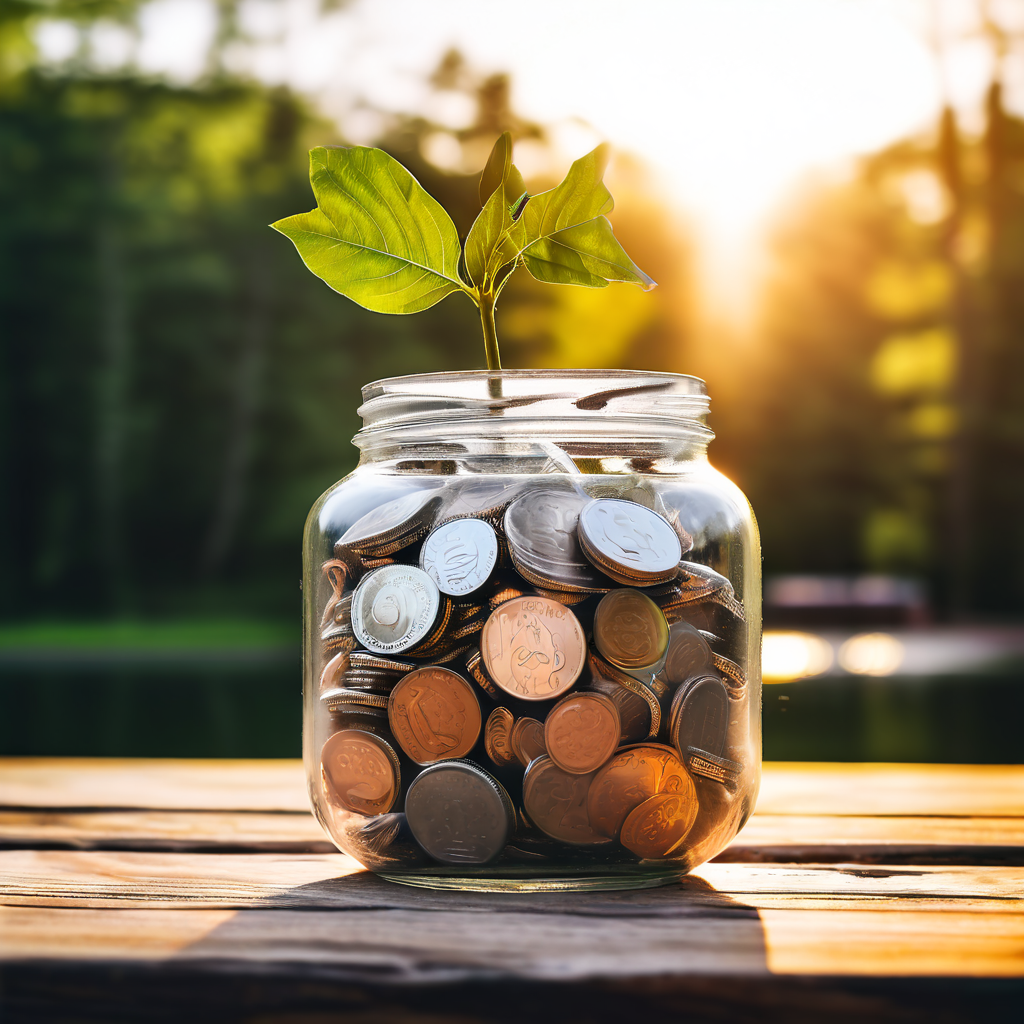
Strategies to Start and Grow Your Emergency Fund
Set a Realistic Savings Goal and Break It into Smaller Milestones
Starting an emergency fund can feel overwhelming, especially if you’re aiming for the recommended 3-6 months’ worth of expenses. Instead of focusing on the total amount, break your goal into smaller, manageable milestones.
Steps to set a realistic emergency savings goal:
- Determine your essential monthly expenses: Calculate your fixed costs, including rent/mortgage, utilities, groceries, insurance, and debt payments.
- Choose an initial milestone: Instead of aiming for a full six months of savings right away, start with $500 or one month’s worth of expenses.
- Gradually increase your target: Once you reach the first milestone, set the next goal at three months of expenses, then work your way up to six months or more.
- Adjust based on personal circumstances: If you have an unstable job, high medical expenses, or dependents, consider saving 9-12 months’ worth of living costs.
Automate Savings to Ensure Consistent Contributions
One of the most effective ways to grow your emergency fund is through automatic savings contributions. Automation removes the temptation to spend extra money and helps build your fund effortlessly.
How to automate your emergency fund savings:
- Set up direct deposits: If your employer allows it, have a portion of your paycheck directly deposited into a separate high-yield savings account.
- Use recurring bank transfers: Schedule an automatic transfer from your checking account to your emergency fund each payday or monthly.
- Utilize round-up savings apps: Apps like Acorns, Qapital, or Chime automatically round up your purchases and deposit the spare change into your savings.
- Increase contributions when possible: Whenever you get a bonus, tax refund, or raise, allocate a portion to your emergency fund to grow it faster.
Cut Non-Essential Expenses and Redirect Savings Toward the Fund
If you’re struggling to find extra cash for savings, review your spending habits and cut unnecessary expenses. Even small changes can make a big impact over time.
Simple ways to free up money for your emergency fund:
- Cancel unused subscriptions: Streaming services, gym memberships, and magazine subscriptions can add up quickly.
- Reduce dining out and coffee runs: Cooking at home and making your own coffee can save hundreds of dollars each month.
- Limit impulse purchases: Use a 24-hour rule before making non-essential purchases. If you still want it after a day, it might be worth buying.
- Negotiate bills and shop for better deals: Call service providers (internet, insurance, phone) to negotiate lower rates or switch to a cheaper plan.
- Use cash-back and coupon apps: Take advantage of discounts, rebates, and cashback programs to save on everyday expenses.
Increase Your Income to Boost Your Savings
If cutting expenses isn’t enough, consider increasing your income to speed up the growth of your emergency fund.
Ways to earn extra money for savings:
- Freelancing or side gigs: Platforms like Fiverr, Upwork, or TaskRabbit can help you earn extra income.
- Selling unused items: Declutter your home and sell clothes, electronics, or furniture on eBay, Facebook Marketplace, or Poshmark.
- Taking on overtime or a part-time job: If your job allows, working extra hours or picking up a part-time job can provide additional savings.
- Renting out unused space: If you have a spare room, consider renting it on Airbnb or listing storage space on platforms like Neighbor.
Reward Yourself for Reaching Savings Milestones
Saving money can be challenging, so celebrate small wins along the way to stay motivated.
Ideas for rewarding yourself:
- When you reach your first $500 milestone, treat yourself to a small but budget-friendly reward (like a favorite meal or a movie night).
- When you save one month of expenses, acknowledge your progress by reflecting on how much financial security you’ve built.
- For bigger milestones (three to six months of expenses), plan a low-cost celebration, such as a weekend getaway or a special dinner.
Boosting Your Emergency Fund Faster
Take on Side Gigs or Freelancing for Extra Income
One of the quickest ways to grow your emergency fund is by earning extra money outside of your regular job. Side gigs and freelancing opportunities allow you to supplement your income without making drastic changes to your budget.
Ideas for side gigs and freelancing:
- Freelance Work: Use platforms like Upwork, Fiverr, or Freelancer to find remote work in writing, graphic design, programming, or virtual assistance.
- Gig Economy Jobs: Drive for Uber, Lyft, or DoorDash, deliver groceries with Instacart, or run errands with TaskRabbit.
- Online Tutoring: Websites like VIPKid, Chegg Tutors, or Wyzant allow you to teach subjects you’re proficient in.
- Pet Sitting or Dog Walking: Use apps like Rover or Wag! to earn money by caring for pets.
- Renting Out Your Assets: If you have a spare room, consider listing it on Airbnb, or rent out your car through Turo.
Even working a few extra hours per week can significantly accelerate your emergency savings.
Sell Unused Items to Add to Your Savings
Decluttering your home can not only create more space but also help you boost your emergency fund by selling things you no longer use.
What to sell for quick cash:
- Electronics: Sell old smartphones, laptops, gaming consoles, or cameras on eBay, Craigslist, or Gazelle.
- Clothing and Accessories: Use apps like Poshmark, ThredUp, or Depop to sell designer or gently used clothing.
- Furniture and Home Goods: List unwanted furniture, appliances, or décor items on Facebook Marketplace or OfferUp.
- Gift Cards: If you have unused gift cards, sell them on sites like Raise or CardCash to turn them into cash.
A weekend spent selling items online or at a garage sale can easily add hundreds of dollars to your emergency fund.
Use Windfalls Like Tax Refunds or Bonuses to Accelerate Savings
Instead of spending unexpected money, use it to supercharge your emergency fund.
Windfalls to redirect into savings:
- Tax refunds: If you receive a tax refund, consider putting at least 50-100% into your emergency fund.
- Work bonuses: If you get an end-of-year or performance-based bonus, set aside a portion for emergencies.
- Cash gifts: If you receive money as a birthday or holiday gift, deposit it directly into your savings.
- Rebates and Refunds: Any unexpected refunds from returns, rebates, or overpayments should be added to your fund instead of being spent.
By making a habit of saving windfalls, you can grow your emergency fund much faster without making drastic changes to your monthly budget.
Cut Back Temporarily to Boost Savings
If you’re serious about building your emergency fund quickly, consider making temporary lifestyle changes to free up extra cash.
Short-term sacrifices for long-term financial security:
- Reduce dining out for a month and cook all meals at home.
- Pause non-essential subscriptions like streaming services or premium memberships.
- Challenge yourself with a no-spend month, where you only buy essentials.
- Use public transportation instead of driving to save on gas and parking costs.
Even small cutbacks can free up $100-$300 per month, significantly increasing your savings over time.
FAQs
Q: What is an emergency fund?
A: An emergency fund is money set aside to cover unexpected expenses like medical bills, car repairs, or job loss.
Q: How much should I save in my emergency fund?
A: Aim to save at least 3-6 months’ worth of living expenses to stay financially secure.
Q: Where should I keep my emergency fund?
A: Keep it in a high-yield savings account for easy access and better interest rates.
Q: How can I start saving for an emergency fund?
A: Start small by setting aside a portion of your paycheck, cutting unnecessary expenses, and using spare change apps.
Q: When should I use my emergency fund?
A: Only for true emergencies, like medical emergencies, urgent home repairs, or job loss—not for vacations or shopping.
Q: What if I can’t save much right now?
A: Start with a small goal, like $500, and gradually increase it as your income grows. Every little bit helps!
Conclusion
Building an emergency fund is one of the smartest financial decisions you can make. It provides a safety net for life’s unexpected moments, reducing stress and preventing debt. By starting small, staying consistent, and adjusting as needed, you can create a financial cushion that ensures long-term stability. Start saving today—your future self will thank you.

